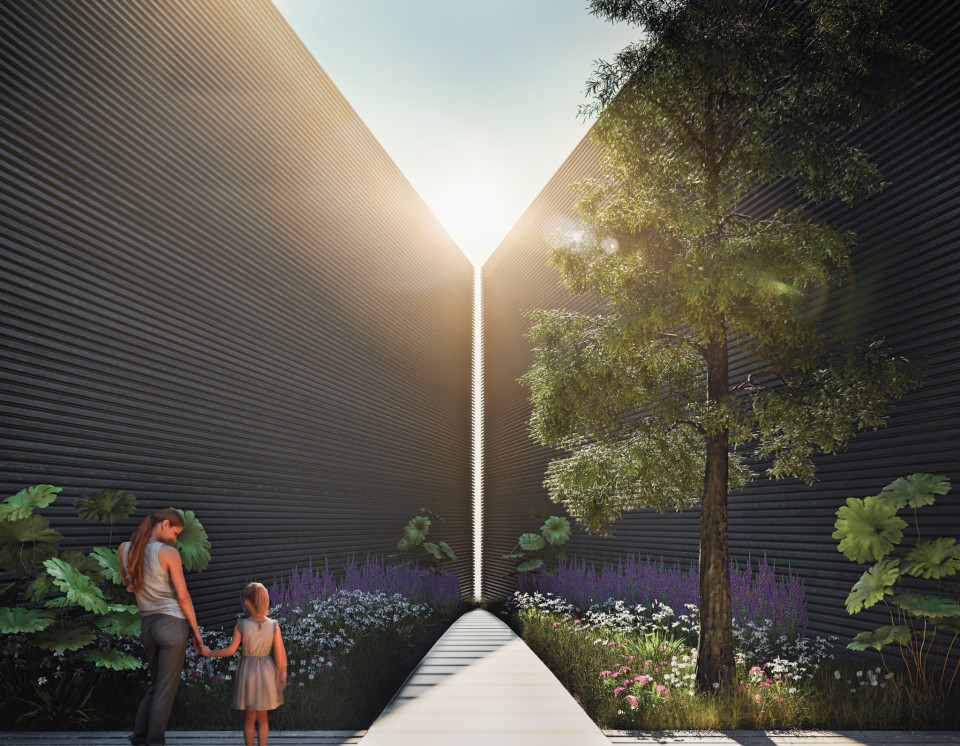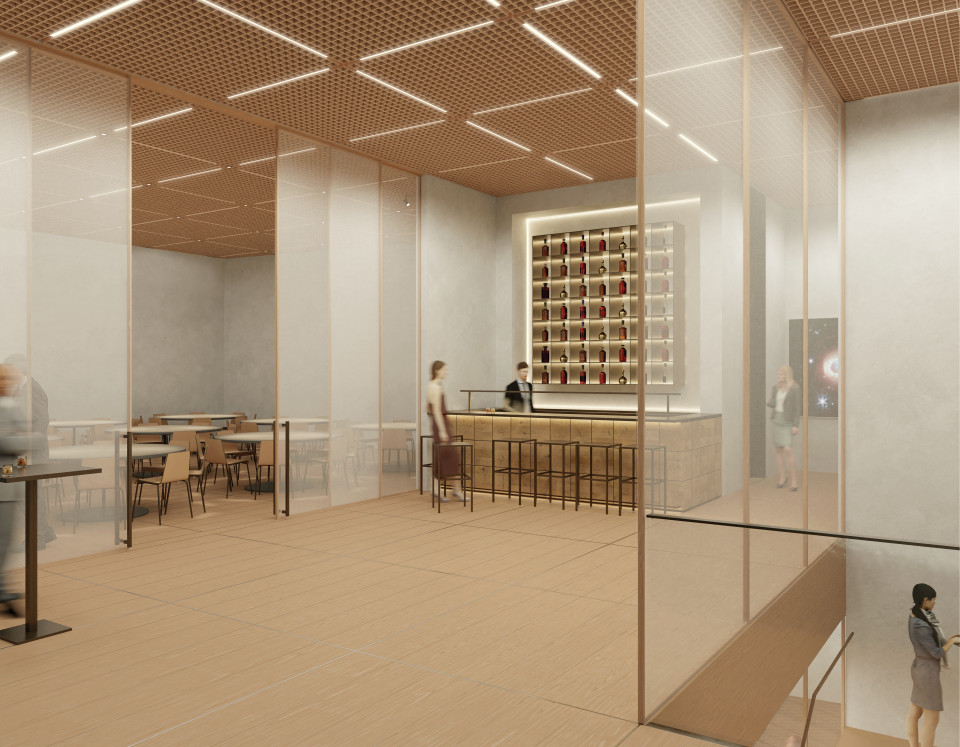The U.S. pavilion in the 2025 World Exposition aims to immerse visitors in exhibits representing what the country calls "the best of America," ranging from culture and education to space exploration.
The pavilion's exterior adopts a minimalist design inspired by the Japanese traditional aesthetic of "wabi-sabi," featuring two triangular buildings with wooden facades juxtaposed by an illuminated, suspended cube.

Under the cube, visitors will find an open-air courtyard with a performance stage, allowing them to explore music, dance and other entertainment, as well as cuisine. Images to be shown at the pavilion are expected to include U.S. landmarks such as the Golden Gate Bridge and the Grand Canyon.
With the theme "Imagine What We Can Create Together," visitors can enjoy envisioning themselves studying at prestigious universities, touring various parts of the country and appreciating its natural beauty, and joining a space journey to the Moon and beyond.
The pavilion will serve as "an immersive cultural bridge," said Trey Trahan, founder and CEO of Trahan Architects, which led the architectural design of the building.

The United States has a long history of participating in the World Expo dating back to the 19th century, viewing the global event as an opportunity to showcase American values, culture and global leadership.
The hamburger is said to have been popularized at the 1893 Chicago expo, and radiophone, invented by Alexander Graham Bell, made its public debut at the St. Louis fair in 1904, according to the U.S. Embassy in Tokyo.
The star attraction of the U.S. pavilion in 1970, the first time the expo was held in Osaka Prefecture in western Japan, was a Moon rock retrieved in the Apollo 12 mission, according to the National Aeronautics and Space Administration.
Ambitious space endeavors will again be a highlight in the upcoming expo, with exhibitions likely to include images from NASA's James Webb Space Telescope, launched in 2021 as the largest and most powerful telescope ever, according to a U.S. government official.
The United States is aiming to return humans to the Moon for the first time since the Apollo 17 lunar landing mission in 1972, as part of its Artemis program that also involves Japan.

The pavilion will utilize reused steel, tensile fabric and other materials from disassembled structures from the Tokyo Olympics held in 2021 and other events. After the close of expo, the materials are expected to be recycled for use at future events.
Related coverage:
A guide to 2025 World Expo in Osaka











